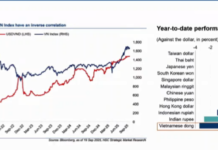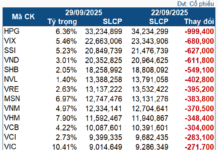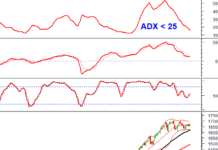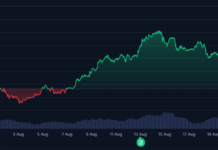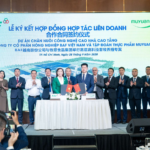Integrating carbon costs and ESG factors into business valuation empowers investors, enterprises, and regulators to assess efficiency, sustainability, and long-term risks. Simultaneously, green taxes unlock opportunities for green capital mobilization, enhance international credibility, and drive sustainable transformation.
Green Taxes in Vietnam: Context and Legal Framework
Green taxes are directly levied on polluting activities or products, incorporating environmental costs into pricing. This economic tool reflects the “hidden costs” of carbon emissions, encouraging businesses to adjust production and consumption to minimize environmental impact. When effectively implemented, green taxes not only reduce emissions but also establish a foundation for pricing environmental risks in financial reports, enabling stakeholders to evaluate industries’ efficiency, sustainability, and long-term risks.
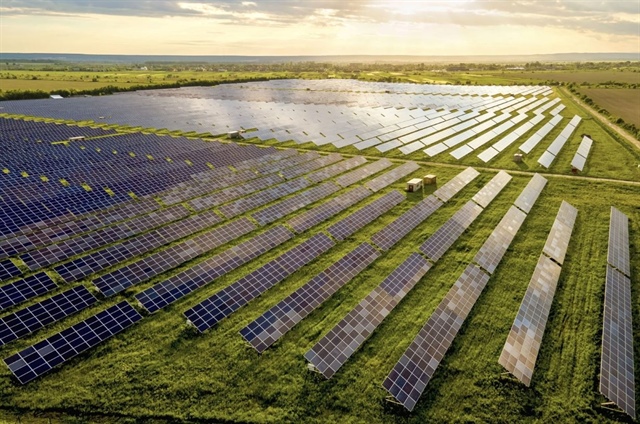
Green taxes serve as an economic tool reflecting the “hidden costs” of carbon emissions. Image: Forbes |
In Vietnam, green taxes are in their infancy. Many businesses have yet to fully integrate environmental risks into valuation, while ESG data remains limited and inconsistent. Consequently, financial reports fail to accurately reflect actual environmental costs, leading to opacity and challenges in assessing long-term project or enterprise effectiveness.
Carbon-intensive sectors like coal, steel, cement, and traditional energy will be significantly impacted once green taxes are widely implemented. These sectors are also focal points in Vietnam’s energy transition and sustainable development strategy. Integrating environmental costs into business valuation within these sectors not only ensures accurate value reflection but also motivates enterprises to enhance risk management, increase green investment efficiency, and attract international capital.
International Lessons on Green Taxes and Business Valuation
Globally, numerous countries have implemented green taxes and environmental cost pricing mechanisms, yielding both direct emission reductions and improved business valuation. The European Union (EU) is a prime example. The EU imposes carbon taxes on heavy industries alongside a carbon credit system, mandating businesses to incorporate emission costs into valuation. This ensures enterprise values fully account for environmental risks, helping companies maintain competitive advantages and access green capital more easily.
In South Africa and Indonesia, green taxes are being phased in, with a particular focus on the coal sector—a high emitter. Governments in these countries mandate transparent data and environmental cost monitoring, enabling businesses to gradually integrate carbon costs into investment plans and ESG reports. This process aids companies in identifying risks, planning technology transitions, and systematically improving environmental governance.
These international experiences offer critical lessons for Vietnam. First, valuing businesses based on environmental costs attracts green investment, mitigates risks, and enhances international reputation. Second, green tax mechanisms should be uniformly applied, transparent, and paired with carbon credits to both incentivize environmental governance improvements and ensure policy effectiveness. Lastly, transparent ESG data and emission cost reporting are essential for Vietnamese investors and businesses to accurately value and make sustainable investment decisions.
Opportunities and Impacts of Green Taxes on Business Valuation in Vietnam
Implementing green taxes in Vietnam presents significant opportunities for both businesses and investors. Firstly, this mechanism helps investors clearly identify latent environmental risks in carbon-intensive industries, from coal, steel, and cement to traditional energy. When emission costs are factored into enterprise value, investment decisions become more transparent, prompting companies to optimize sustainable development strategies.
For businesses, green taxes are not just emission reduction tools but also opportunities to enhance environmental risk management. Enterprise values begin to accurately reflect the “hidden” costs of carbon emissions and ESG factors, boosting market credibility and creating competitive advantages in accessing green capital.
Companies in key sectors can leverage this mechanism to transform production processes, reduce emissions, and optimize financial efficiency, thereby sustainably enhancing business valuation.
For the government, green taxes create a new revenue stream while supporting green transition policies. When applied uniformly and transparently, this mechanism encourages businesses to invest in clean technologies, improve ESG governance, and drive heavy industries toward sustainable production models.
Green taxes also foster fair competition, where environmentally responsible businesses are accurately valued, while those failing to optimize emissions face clear costs, driving positive industry-wide change.
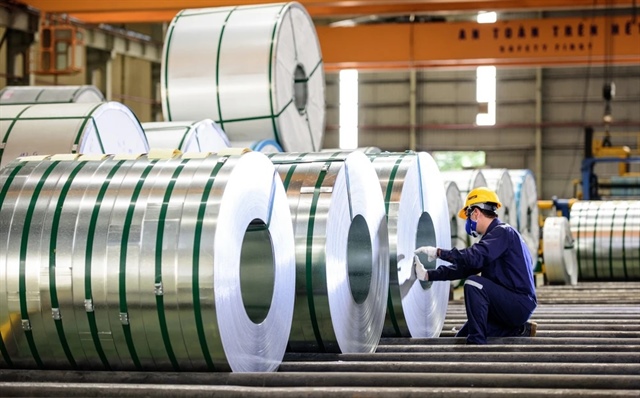
Implementing green taxes in Vietnam offers significant opportunities for businesses and investors. Image: Ministry of Industry and Trade |
Linked to key sectors, green taxes strategically guide production transformation. For instance, the coal industry can plan reduced mining capacity alongside renewable energy investments, while steel and cement sectors can innovate technologies to cut emissions and boost productivity. When environmental costs are accurately priced, enterprise values reflect not only current profits but also long-term risks and opportunities, fostering a sustainable business ecosystem attractive to domestic and international investors.
Challenges and Solutions for Green Tax Implementation in Vietnam
Despite its opportunities, implementing green taxes in Vietnam faces challenges. Limited and opaque ESG data makes it difficult for businesses to accurately measure and integrate environmental costs into valuation. Many companies lack systematic environmental risk assessment practices, leading to financial reports that inadequately reflect carbon emission “hidden costs,” resulting in misvalued enterprises.
Additionally, compliance costs and ESG reporting requirements can be high, deterring businesses concerned about profit and market value impacts. The risk of negative market reactions is real: insufficient transparency or assessment could lead investors to make poor decisions, affecting capitalization and stock prices. These challenges are particularly acute in carbon-intensive sectors like coal, steel, cement, and traditional energy, where potential environmental costs significantly influence enterprise valuation.
To overcome these obstacles, a series of synchronized solutions is required. Establishing a standardized, transparent ESG database is crucial for businesses to accurately measure and reflect environmental costs. A phased green tax implementation roadmap, combined with carbon credits, will minimize market shocks and allow gradual business adaptation.
Training, consulting, and technology transition support for businesses are essential to help them understand environmental cost impacts on valuation, adjust production strategies, investments, and risk management. Vietnam can also learn from international experiences, where companies have integrated carbon costs into valuation to attract green investment, enhance reputation, and improve capital mobilization.
Finally, increasing ESG reporting and environmental risk assessment transparency will help investors, shareholders, and regulators accurately determine enterprise value. When businesses fully reflect environmental costs, market values become more precise, credibility rises, and green transitions are incentivized, driving clean technology investment and international competitiveness.
In conclusion, implementing green taxes in Vietnam requires transparent data, a reasonable execution roadmap, business support, and international lessons to reduce emissions, optimize business valuation, and achieve sustainable development.
Green taxes are not only emission reduction tools but also opportunities for sustainable business valuation in Vietnam. When effectively implemented, combined with carbon credits and transparent ESG data, this mechanism helps businesses fully reflect environmental costs, enhance risk management, and boost market credibility.
For the government, green taxes create new revenue, support green transitions, and encourage clean technology investments. A reasonable implementation roadmap and international lessons will minimize market shocks and optimize enterprise valuation. Green taxes offer Vietnam a chance to protect the environment, enhance international competitiveness, and drive sustainable transformation in key sectors.
Phạm Thu Trang
– 13:00 01/10/2025
Vinamilk Tops Forbes Vietnam’s 25 Leading Brands of 2025
Vinamilk (HOSE: VNM) leads the “Top 25 Leading Brands in Manufacturing and Services,” outpacing industry peers and solidifying its national brand strength after nearly 50 years of growth. Additionally, Forbes Vietnam has honored Vinamilk in the Top 50 Best Listed Companies in Vietnam for the 13th consecutive year—an unparalleled record in the food and beverage sector.
SeABank Unveils Sustainability Report, Reinforcing Commitment to Long-Term Value Creation
SeABank (HOSE: SSB) proudly introduces its inaugural standalone Sustainability Report, marking a significant milestone in its journey towards long-term value creation. With a strong focus on Environmental, Social, and Governance (ESG) criteria, the bank’s commitment to sustainability is demonstrated through tangible, transparent, and measurable actions.
DHG Pharma Maintains 14-Year Streak in Vietnam’s Top 50 Most Efficient Business Companies
On September 27, 2025, at the Corporate Governance Conference 2025 held in Ho Chi Minh City, DHG Pharma was once again honored as one of the 50 Most Effective Business Companies in Vietnam 2025. This marks the 14th consecutive year the company has been among the top 5 recipients of this prestigious recognition, solidifying its position as the leading domestic pharmaceutical company in the nation.
Revolutionary 12 Trillion VND Pig Farming Project Unveiled: AI-Powered Cough Detection and 24/7 Robot Patrols in 5-Story Residential Complex
On September 28, 2025, BAF Vietnam Agriculture JSC (HoSE: BAF) and Muyuan Food Group (China) formalized a joint venture partnership, launching Vietnam’s first high-tech, multi-story pig farming project. Located in Tay Ninh Province, the initiative boasts a total investment of VND 12,000 billion and leverages cutting-edge automation and AI technologies unprecedented in the country’s livestock sector.
















